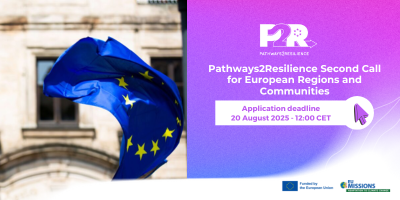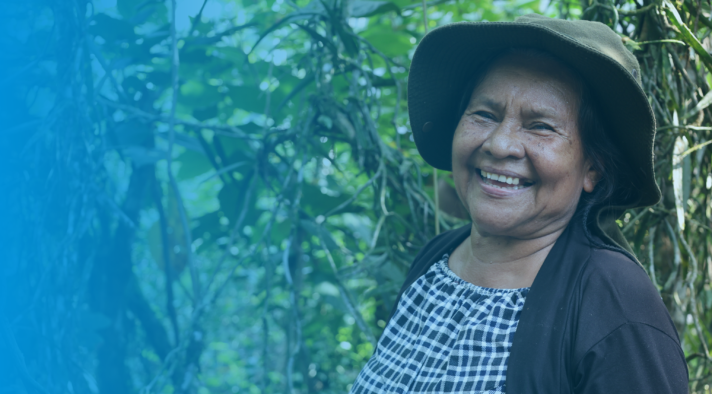As the dust settles on COP16 in Cali, Colombia, the global biodiversity community finds itself at a critical moment in time. While the conference brought together an unprecedented 23,000 participants from 196 countries, its conclusion left several crucial decisions unresolved, with a need to resume the meetings in Rome in February 2025. Yet, amid these challenges, hope emerged through the leadership of subnational governments in driving concrete action for people and nature.
Subnational Leadership in Action
The landscape of global biodiversity governance is evolving, with regional governments increasingly stepping forward to fill crucial implementation gaps. Québec made history as the first subnational government to contribute to the Global Biodiversity Framework Fund (GBFF), joining nations like New Zealand, France, and Austria in pushing the total pledges to $396 million. While this represents progress, we remain far from the Framework’s ambitious target of mobilizing $200 billion annually by 2030.
This leadership extends beyond financial commitments. The Advisory Committee on Subnational Governments and Biodiversity (AC SNG) continues to represent a powerful coalition, with representatives from over 25 regions including Aichi, Basque Country, Campeche, Catalonia, Goias, Lombardy, Paraná, Québec, Rio de Janeiro, São Paulo, Scotland, and Wales working together to advance biodiversity action.

California’s decision to join as the first U.S. state member marked a significant milestone, with State Secretary, Wade Crowfoot emphasizing that “The call to action at COP 16 was clear: it takes everyone, at all levels, to step up and combat nature loss and the climate crisis. We are proud to rally leaders from across the globe to accelerate and show what’s possible in California. Our planet and people depend on urgent action.”
At COP16, Córdoba and Santa Fe became the first Argentinian subnational governments in joining the AC SNG. María Victoria Flores, Minister of Environment and Circular Economy of the Province of Córdoba, shares that “For the Province of Córdoba, joining the Advisory Committee on Subnational Governments is a transcendental step”, adding that “In Córdoba, we have promoted an Environmental Attributes Law that allows us to certify and value natural resources under conservation or ecological restoration”.

When explaining why Santa Fe joined the AC SNG, Enrique Estevez, Minister of Environmental Affairs and Climate Change for Santa Fe in Argentina, highlighted the delicate balance the region hopes to achieve between environmental conservation and sustainable development: “Santa Fe faces an enormous challenge: conserving its ecosystems, such as protected natural areas and Ramsar Sites, while working on public policies that support sustainable productive reconversion processes.
International cooperation and collaboration between subnational governments is key to moving forward on this path, building lasting solutions that transcend generations.” Looking at the future, Santa Fe’s Minister’s explains that “Santa Fe sees itself as a model of environmental governance, integrating technology, science, and citizen participation to meet global goals and ensure an environmental legacy for future generations.”

Monitoring Progress
While negotiations on the complete Monitoring Framework remain pending to be adopted at the resumed COP16 sessions (25-27 February 2025, Rome, Italy), subnational governments are already demonstrating leadership through the CitiesWithNature and RegionsWithNature platforms, officially recognized by the Convention on Biological Diversity, who have attracted over 350 cities and regions from 77 countries.
Brazil set a remarkable precedent when the Brazilian Association of State Environmental Entities (ABEMA) announced that all Brazilian states would join RegionsWithNature – the first country to achieve complete state-level participation.
The Path Forward: Rome and Beyond
The resumed cop16 meeting in February 2025 must address critical pending issues, particularly regarding resource mobilization and monitoring frameworks. The proposed establishment of a new biodiversity financing instrument under COP authority remains a point of contention between developed and developing nations. However, the demonstrated commitment of subnational governments offers a model for breaking through such impasses.
Bridging Climate and Biodiversity Action
As we look toward UNFCCC COP30 in Brazil, the opportunity to align climate and biodiversity agendas has never been clearer. The framing of COP30 as a “Nature COP,” combined with its proximity to the Amazon rainforest, the Mata Atlântica, and many of the world’s biodiversity hotspots, creates a unique moment to strengthen the integration of these crucial environmental challenges.
The RegionsAdapt Progress Report 2024, launched at UNFCCC COP29 by Regions4, showcasing integrated policies and solutions from 40 regions across 16 countries, shows how subnational governments are already leading the way in developing comprehensive approaches to climate and biodiversity challenges.
Subnational leaders: shifting the narrative
The challenges faced during COP16 negotiations highlighted tensions between Parties and emphasized the critical need for trust and consensus to achieve Peace with Nature and meet the goals set in the Kunming-Montreal Global Biodiversity Framework. Yet, amid these difficulties, subnational and local leaders demonstrated to the world that transformative change for people and nature is possible, while prioritizing local communities and sustainable development.
The resumed sessions of CBD COP16 in February 2025 and the UNFCCC COP30 in November 2025, present another opportunity for subnational governments to collaborate with their national governments and with UN institutions. Regardless of international negotiation outcomes, subnational leaders will continue their vital work – first in their territories, where concrete action and measurable results take place, and second at COPs, where they advocate for stronger recognition of their essential role and responsibilities in biodiversity conservation.



